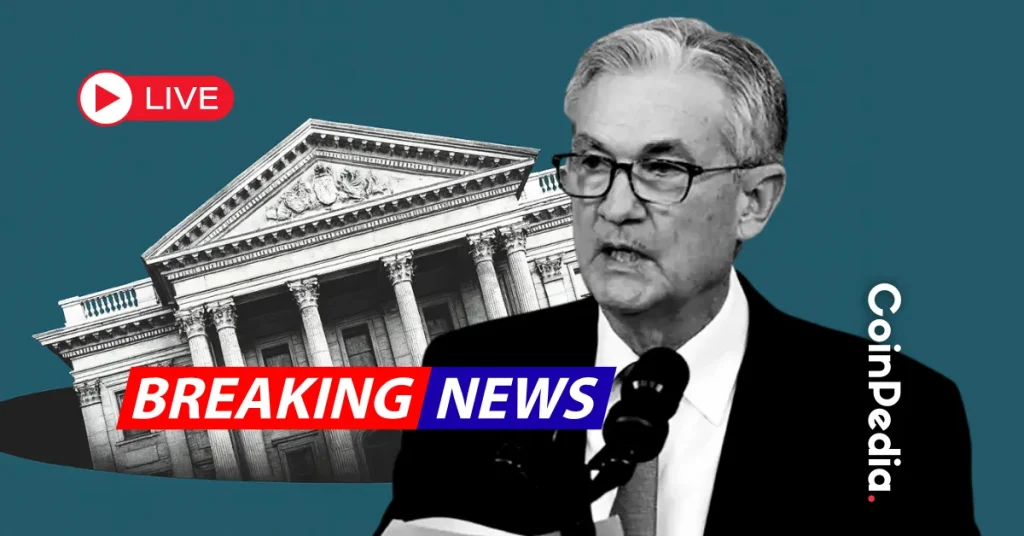
Ten years ago, we first saw a strange new digital currency named Bitcoin (BTC) when its price skyrocketed during the Cyprus banking crisis. The Cypriot government imposed a 10% tax on deposit withdrawals, creating a huge backlash from the public and accidentally turning some of them towards the idea of a bank-free digital currency.
Many see parallels between the events of the past few weeks and the situation at the time.
Related article: Similarities between this crisis and the 2013 Cyprus crisis that drove Bitcoin higher
Bitcoin’s price rose again on speculation that heightened tensions in Western banks would make people turn to Bitcoin’s properties, such as censorship resistance and the absence of intermediaries.
But the situation today is very different from 2013. With cryptocurrency now being perceived by the public—albeit largely negatively—the crypto industry is facing unprecedented challenges that will further intensify the fight against vested interests in the financial industry.
Thousands of people will gather next month at CoinDesk’s annual conference, Consensus, to discuss the challenges and opportunities of crypto assets. The cryptocurrency community now has a limited chance to define the future of currency.
Similarities to the 2008-2009 financial crisis
Remember, the Bitcoin blockchain was born out of the chaos of the 2008-2009 financial crisis. Satoshi Nakamoto appeared on January 3, 2009 in the London Times headline of the day, “The Times 03/Jan/2009 Chancellor on brink of second bailout for banks.” on the brink of remedies)” inscribed on the first block.
The crisis at the time highlighted how reliance on banks for money flow and payments exposed the economy as a whole to the risk of mismatches between bank investments and liabilities, and the consequent failure to protect deposits.
And the “too big to fail” position of the big banks that created “systemic risk” because the credit risks are intertwined – governments are always pushing them to protect the economy. The idea of bailouts – was abused to make extremely high-risk investments. In other words, it showed that Wall Street (and other financial centers) are effectively holding democracy hostage.
Hundreds of local banks face withdrawals from worried customers after the collapse of three major banks. The US Federal Reserve has created a new $2 trillion deposit protection program.
This time, the Swiss central bank gave Credit Suisse a $54 billion loan. There are many similarities to the previous crisis.
It reminded us last weekend that the Fed and Federal Deposit Insurance Corporation (FDIC) announced full protection of deposits so that the thousands of startups that deposited money with Silicon Valley banks would be able to pay their employees in 2008. It reminded me of September 17th.
On the same day, two days after the collapse of Lehman Brothers, Reserve’s Reserve Primary Fund, which was used to manage cash held by companies, fell below par. The collapse of similar short-term money market funds (MMFs) has sparked fears that it will cause widespread disruption to a system primarily used to pay salaries to employees and contract workers.
Quantitative easing and rate hikes
It’s not just the similarities that are striking. The causes and consequences of the crisis are also impressive. There is a direct link between the failure of Silicon Valley Bank and the policies introduced in the aftermath of the last crisis.
In 2009, the Fed launched what would be a multi-year period of “quantitative easing.” Silicon Valley’s venture funds were able to pour large sums of money into startups thanks to the large amount of dollars in circulation.
And those startups deposited money in Silicon Valley banks, making investments that at the time seemed prudent. Silicon Valley Bank invested its deposits in long-term US Treasuries and mortgage-backed securities.
The problem is that in January 2022, the Fed finally acknowledged that quantitative easing was prolonging inflation and began aggressively raising interest rates. As a result, the government bond market slumped, and Silicon Valley Bank, which made the fatal mistake of not hedging the risk of interest rates, suffered a large loss.
As fear spreads to smaller regional banks, depositors flock to Wall Street firms too big to fail. Big banks are getting bigger.
Thus, elite bankers will become the gatekeepers of the economy on an unprecedented scale. This is the power of centralization, which is already showing signs of excessive influence.
Crypto assets as bad guys
Bitcoin’s raison d’être is as it’s always been said. That is, to provide an alternative option to the centralized model of fiat currencies operated by central banks in conjunction with commercial banks by removing intermediaries from payments and programming policies into predictable issuance schedules. And to mitigate the entrenched vulnerabilities that recent events have revealed.
On the surface, however, the banking crisis is not good news for the cryptocurrency community, including Bitcoin.
The first to fail, Silvergate Bank, was partly due to its deep ties to struggling crypto companies. As such, some anti-crypto politicians, such as U.S. Senator Elizabeth Warren, have called for a crackdown on the crypto industry, which has had a complicit effect on Silicon Valley banks. However, in reality, the relationship between Silicon Valley Bank and crypto assets was extremely small.
Authorities have also closed Signature Bank, another bank popular with the crypto industry. Governments, intentionally or indirectly, are using their relationships with banks to put pressure on the crypto industry. A cryptocurrency firm that did business with three failed banks has been desperate to open accounts at another bank, but has reportedly been repeatedly turned away by bank compliance officers.
The message “Stay away from crypto assets”
The New York Department of Financial Services (NYDFS) said the signature bank closure had nothing to do with crypto assets and was caused by a “crisis of trust” in management, but the supposedly solvent bank closed. People were puzzled as to why.
Former U.S. Congressman Barney Frank, a board member of Signature Bank, said in an interview with New York magazine that NYDFS used the bank “to get the message out ‘stay away from crypto’.” I said that it might be. Reuters then reported that the FDIC was insistent on abandoning its cryptocurrency business as a condition of its acquisition of Signature Bank. However, the FDIC denies this report.
Blacklisting a legally recognized industry in this way is an abuse of power. But if the NYDFS is working with federal authorities, there is little the crypto industry leaders can do right now.
Meanwhile, stablecoins, which play a pivotal role in fiat-to-crypto exchanges, have also been caught in the fray.
When Circle, which handles USD coin (USDC), announced that part of USDC’s reserve assets was deposited in Silicon Valley Bank, USDC temporarily lost its linkage with the dollar (dollar peg). After that, the dollar peg recovered, but due to the closure of Signature Bank, Circle was unable to use the instant clearing system “Signet”, which had been operating 24 hours a day, 365 days a year, and had to rely on the time-limited service of Wall Street’s major BNY Mellon. I had to.
clash of powers
Still, as angel investor Tatiana Koffman wrote in CoinDesk, “Bitcoin was made for this moment.” The story around Bitcoin’s self-custody model will only get stronger as people continue to lose confidence in banks’ ability to keep their deposits safe.
Related article: Bitcoin, made for this moment[Column]
If the Fed were forced to change course and cut interest rates, it could lead to a weaker dollar, making bitcoin even more attractive. became stronger).
All in a complex, multi-faceted clash of powers that will ultimately lead governments to accelerate the introduction of new regulatory frameworks for the coming era of digital currencies.
Bank failures highlight the need to move away from the crisis-prone fractional reserve banking system. Stablecoins fully backed by reserve assets are designed to be just that solution.
Stablecoin issuers should be required to obtain banking licenses as USDC hits hard times, allowing access to the Fed instead of depositing reserves in third-party traditional banks will increase.
Wyoming-based Custodia Bank did just that and applied to join the Fed system, but was turned down. Thinking about it now, it seems like a really stupid decision. Circle also has a stated goal of becoming a bank.
How will traditional banks react?
How would traditional banks react if such a model were allowed? Banks would not want new crypto players to rob depositors. Depositors are a super-cheap source of money, and without them, there could be an even bigger banking crisis.
Will governments return to direct central bank digital currency (CBDC) control? With CBDCs, central banks can target different interest rates, including negative ones, and it is believed that they can incentivize people to keep depositing with traditional banks that offer higher interest rates.
But complicating matters for governments is that depositors may abandon fiat currencies altogether and move their deposits into cryptocurrencies such as Bitcoin. As the battle to dominate the digitization of fiat currency continues, Bitcoin, the original digital currency, will exist as an alternative option to fiat currency.
Does that mean Bitcoin will become a true competitor to fiat currencies in payments? Not necessarily.
public perception
Amid this uncertainty, developing countries plagued by capital outflows may follow El Salvador in adopting bitcoin as legal tender, but the use of existing fiat currencies remains strong in larger countries. (Technically, Bitcoin still has to prove its worth as a payment mechanism).
Still, the very existence of Bitcoin as a competitor could force governments to change, especially as countries such as China gain an edge in the race to digitize their currencies.
Public perception of cryptocurrency technology has the power to erase all of this. After last year’s turmoil, the image of crypto assets is now extremely negative. Millions of private investors suffered losses, and the image spread of a community dominated by scammers and selfish people bent on greedily amassing wealth.
Fundamentally, money is all about trust, a matter of trust and trust between those who use it. Confidence in governments and their banking partners is likely to decline as a result of the banking crisis. But crypto assets are currently plagued with even greater distrust.
As the battle to define money unfolds, members of the crypto community have a responsibility to take actions that foster trust. If you can do that, the future should be in your hands.
|Translation and editing: Akiko Yamaguchi, Takayuki Masuda
|Image: dickcraft/CoinDesk
|Original: This Crisis Will Define the Future of Money
The post This crisis defines the “future of money”[Opinion]| coindesk JAPAN | Coindesk Japan appeared first on Our Bitcoin News.

 2 years ago
112
2 years ago
112














 English (US) ·
English (US) ·